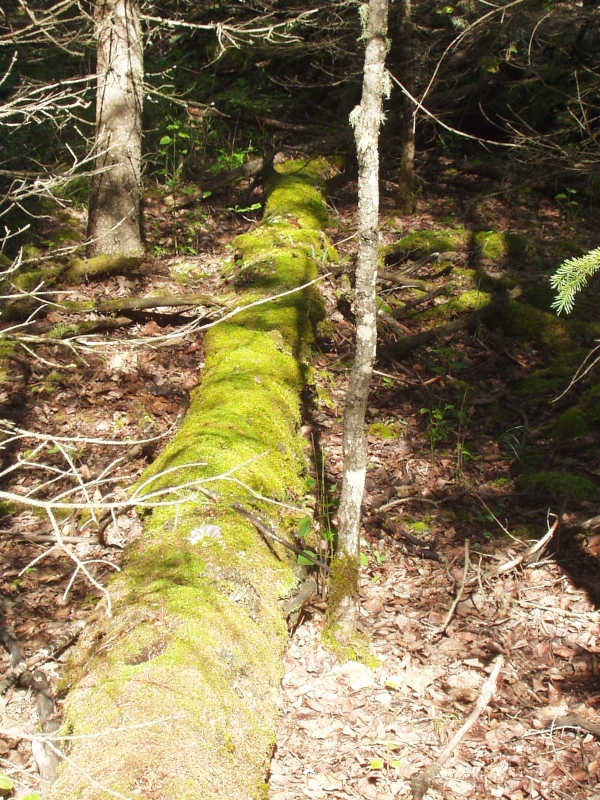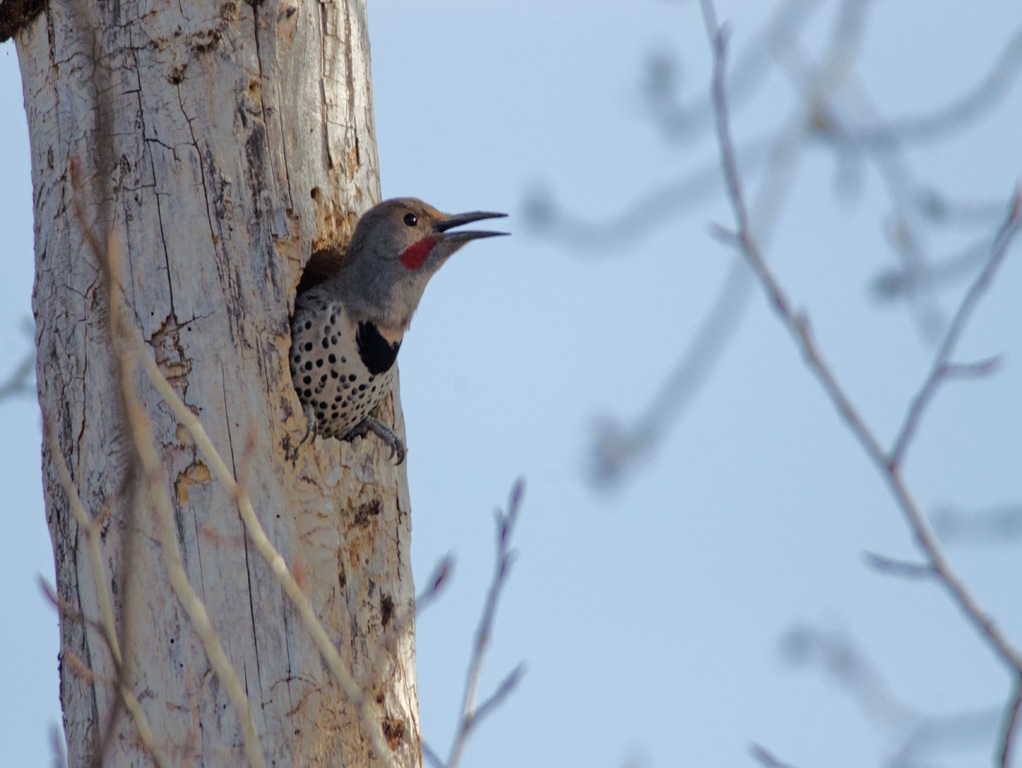Section 3.3
Status of Habitat Elements
Trees, snags, and fallen logs
Through the use of ground-based sampling, the ABMI measured the density of living trees and snags, and the volume of coarse woody debris (i.e., fallen logs) in the Al-Pac FMA area.

Photo: Stephan Pietzko

Photo: Emily Chow

Photo: ABMI
 Introduction
Introduction
Resource managers do not often manage for individual species but instead manage habitat[1]. There are several key habitat elements that are important to many species that live in the boreal forest, including large trees, snags (standing dead trees), and coarse woody debris (fallen dead trees)[1,2,3,4]. For example, many birds, such as chickadees and woodpeckers, are associated with large trees and snags for nesting and foraging; these birds are known to be sensitive to a reduction in these forest habitat elements. Mammal species, like Fisher and Marten, use large snags and fallen trees as den sites. Fallen trees are also important for these species during the winter, providing them with access routes under the snow as they hunt for prey.
Fallen trees have a number of other important functions in the boreal forest, such as:
- improving soil fertility and health by storing organic matter, moisture, carbon and nutrients;
- serving as seed or spore germination sites, particularly for some mosses, and;
- supporting diverse communities of invertebrates, such as oribatid mites, that are unlike communities found on the forest floor.
Overall, many components of biodiversity are linked to large trees, snags, and fallen trees. Because these habitat elements are generally more abundant in older forests, they can be challenging to maintain in landscapes managed for the production of timber, energy, or agricultural commodities.
Principle 6: Environmental Values and Impacts
Criterion 6.2 – Assessment of potential impacts to identified environmental values by management activities before site disturbing activities commence
ABMI data and reporting can help support FSC Indicator 6.2.2 (assessment of impacts on stand-level values) by providing baseline information on stand and site qualities, such as coarse woody debris and density of standing dead and live trees.
Criterion 6.6 – Prevention of biodiversity loss through habitat management in the management unit
ABMI data and reporting can provide baseline information supporting FSC Indicator 6.6.1 in identifying targets for post-harvest forest composition in relation to the (1) density and spatial distribution of trees, (2) size distribution of trees, and (5) management of coarse woody debris.
 Results
Results
Trees and Snags
The density of trees and snags in the Al-Pac FMA area is:
672.6/ha
Trees > 7 cm diameter at breast-height (DBH)
- These numbers are averages across the whole FMA area, including non-forested areas, non-commercial forest types, and human footprint.
- Estimated density of all categories of trees and snags showed similar patterns of change between 2010 and 2016 in the Al-Pac FMA area. Large trees and snags declined slightly because human footprint focused on the oldest stands–where these structures are most abundant–exceeding recruitment rates of these elements from the aging of mature stands.

The Northern Flicker requires large diameter decaying trees, or snags for nesting.
Photo: ABMI
Coarse Woody Debris
The average volume of coarse woody debris in the Al-Pac FMA area is:
44.5 m3/ha
CWD > 7 cm DBH
15.1 m3/ha
CWD > 25 cm DBH
- These numbers are averages across the whole FMA area, including non-forested areas, non-commercial forest types, and human footprint.
- Average volume of all coarse woody debris and large coarse woody debris showed no change between 2010 and 2016.

Coarse woody debris is an important substrate for many species of moss and lichen.
Photo: ABMI
References
Bunnell, F.L., L.L. Kremsater, and Wind, E. 1999. Managing to sustain vertebrate richness in forests of the Pacific Northwest: relationships within stands. Environmental Review 7(3): 97-146. doi:10.1139/er-7-3-97.
Lee, P.C., S. Crites, M. Nietfeld, H. Van Nguyen, and J.B. Stelfox. 1997. Characteristics and origins of deadwood material in aspen-dominated boreal forests. Ecological Applications 7(2):691-701.
Lee, P.C. 1998. Dynamics of snags in aspen-dominated midboreal forests: Forest Ecology and Management 105(1998):263-272.
Bunnell, F.L. and I. Houde. 2010. Down wood and biodiversity - implications to forest practices. Environmental Review 18:397-421.

Downed Woody Debris
Photo: ABMI





